Block If Without End If
Introduction:
The Block If statement is a fundamental component of programming languages that allow for conditional branching. It is used to control the flow of a program by executing specific blocks of code based on certain conditions. In this article, we will dive into the syntax, structure, and various use cases of the Block If statement. Additionally, we will address common errors and provide examples to clarify its usage.
1. Overview of the Block If Statement:
The Block If statement is a conditional statement that allows us to execute a block of code if a given condition is true. It provides flexibility in decision-making within a program, as it allows different paths of execution based on the outcome of a condition. Without this statement, programs would follow a linear and predictable path.
2. Syntax and Structure of the Block If Statement:
The syntax of the Block If statement may vary slightly depending on the programming language, but the basic structure is as follows:
“`
If condition Then
‘ Code block to be executed if the condition is met
End If
“`
The condition is an expression that evaluates to either True or False. If the condition is True, the code block following the “Then” keyword will be executed.
3. Working with Multiple Conditions in the Block If Statement:
In many cases, we may need to evaluate multiple conditions before deciding which block of code to execute. This can be achieved using logical operators such as “And” and “Or”.
“`
If condition1 And condition2 Then
‘ Code block to be executed if both conditions are met
End If
“`
Here, the code block will only execute if both condition1 and condition2 evaluate to True. Alternatively, we can use the “Or” operator to check if either condition1 or condition2 is True.
4. Using Variables and Comparisons in the Block If Statement:
The Block If statement is often used with variables and comparisons to make decisions based on specific values. We can compare variables with constants or other variables using operators such as “=”, “<>“, “<", ">“, “<=", and ">=”.
“`
If score >= 90 Then
‘ Code block to be executed if the score is greater than or equal to 90
End If
“`
In this example, the code block will only execute if the value of the “score” variable is greater than or equal to 90.
5. Handling Nested Block If Statements:
Nested Block If statements provide a way to evaluate multiple conditions and execute different code blocks accordingly. This allows for more complex decision-making within a program.
“`
If condition1 Then
If condition2 Then
‘ Code block to be executed if both conditions are met
End If
End If
“`
In this case, the inner Block If statement will only execute if condition1 is True and condition2 is also True.
6. Incorporating Else and ElseIf Clauses in the Block If Statement:
The “Else” clause can be added to the Block If statement to define a block of code that will be executed if the condition is not met. This provides an alternative path of execution.
“`
If condition Then
‘ Code block to be executed if the condition is met
Else
‘ Code block to be executed if the condition is not met
End If
“`
Additionally, the “ElseIf” clause can be used to evaluate additional conditions and execute different code blocks.
“`
If condition1 Then
‘ Code block to be executed if condition1 is met
ElseIf condition2 Then
‘ Code block to be executed if condition2 is met
Else
‘ Code block to be executed if neither condition is met
End If
“`
7. Examples and Use Cases of the Block If Statement:
The Block If statement is widely used in various programming scenarios. It can be used to validate user inputs, control program flow based on external factors, or handle specific cases in an algorithm. Here are a few examples:
– Validating user inputs: Checking if a user has entered a valid password by verifying its length and complexity before granting access.
– Controlling program flow: Executing different code blocks based on the time of day or the presence of certain files.
– Algorithmic decision-making: Sorting a list of numbers and executing different code blocks based on their values.
FAQs:
Q1: What is the difference between “End If” and “Exit If”?
A1: The “End If” statement is used to mark the end of a Block If statement. It specifies that the code block associated with the “If” condition has ended. On the other hand, “Exit If” is used to prematurely exit the current Block If statement based on a specific condition.
Q2: What does “Next without For” error mean?
A2: The “Next without For” error typically occurs when there is a missing or mismatched “For” statement in a loop structure. It signifies that the program encountered the “Next” statement without an associated “For” statement.
Q3: What is the meaning of “End If là gì” in English?
A3: “End If là gì” is a Vietnamese phrase that translates to “What does End If mean” in English. It refers to the purpose and significance of the “End If” statement in programming.
Q4: Can I have multiple conditions in a Block If statement?
A4: Yes, you can include multiple conditions in a Block If statement using logical operators such as “And” and “Or”. This allows for more complex decision-making.
Q5: What should I do if I encounter an “Else without If” error in VBA?
A5: An “Else without If” error typically occurs when there is a missing or misplaced “If” statement before the “Else” clause. Make sure that each “Else” statement is preceded by a corresponding “If” statement.
Q6: How do I handle multiple “If” conditions in VBA?
A6: You can handle multiple “If” conditions by using the “ElseIf” clause. This allows you to evaluate additional conditions and execute the corresponding code block if the previous conditions are not met.
Q7: What is the meaning of “Multi if” in VBA?
A7: “Multi if” refers to the ability to have multiple “If” conditions in VBA. It allows for more flexible decision-making and execution paths within a program.
In conclusion, the Block If statement is a powerful tool in programming languages, offering the ability to make decisions based on conditions. By understanding its syntax, structure, and various use cases, you can effectively control the flow of your program and create more dynamic and robust applications.
What Is A \”Block If Without End If Compile Error\” In An Excel Vba (Macro)
What Does Block If Without End If Mean?
In the world of programming, the phrase “block if without end if” refers to the improper or incorrect usage of conditional statements in coding languages such as Python, Java, or C++. Specifically, it indicates that a conditional block of code is not correctly terminated with the required closing statement, typically an “end if” statement. This can lead to syntax errors and logical issues in a program.
Understanding Conditional Statements
Before delving into the concept of “block if without end if,” it’s essential to have a solid grasp of conditional statements. In programming, conditional statements are used to make decisions and control the flow of execution within a program. They evaluate Boolean expressions and determine whether a certain block of code should be executed or not.
The most common types of conditional statements found in programming languages are “if,” “if-else,” and “if-else if-else” statements. These statements allow programmers to create more complex decision-making conditions by evaluating multiple expressions.
The Importance of Correct Syntax
To ensure a program runs smoothly, it is crucial to follow the correct syntax and formatting guidelines. Syntax errors occur when the program code doesn’t adhere to the specified rules of the programming language. Such errors can lead to the program not executing correctly or even failing to run at all.
In the context of “block if without end if,” the syntax error typically arises when a programmer forgets to include the closing statement to properly terminate the conditional block. Without the appropriate “end if” statement, the code cannot be executed as intended, resulting in an error.
Understanding the Error Message
When encountering a “block if without end if” error during program execution, a specific error message is usually displayed. The error message helps programmers identify where the mistake in the code occurred and provides insight into how to correct it.
For instance, in Python, the error message may read:
“SyntaxError: invalid syntax
Block if without end if”
This error message indicates that an incomplete or incorrect conditional statement has been identified, leading to the program failing to compile or execute as expected.
Correcting the Error
To resolve the “block if without end if” error, it is necessary to identify where the error lies in the program’s code and correctly terminate the conditional statement.
Programmers must review their code and ensure that every conditional statement follows the conventional syntax for the specific programming language being used. This includes using the correct opening statements (e.g., if, if-else, if-else if) and closing statements (e.g., end if, }).
Once the issue is identified, programmers can correct it by adding the corresponding closing statement, such as “end if” in languages like Python or “}” in languages like C++.
Frequently Asked Questions (FAQs)
Q: Can “block if without end if” errors occur in all programming languages?
A: No, this specific error message is typically encountered in languages that use specific keyword-based syntax. However, different programming languages may have similar error messages if their conditional statements are not correctly terminated.
Q: What happens if I don’t include the closing statement?
A: Without the required closing statement, the program will result in a syntax error, preventing the code from running correctly. It may fail to compile or execute as intended.
Q: How can I avoid “block if without end if” errors?
A: Following good coding practices, such as double-checking your code and ensuring proper syntax and formatting, can help prevent these errors. Additionally, using automated tools and integrated development environments (IDEs) that provide real-time code analysis can help catch these errors as you write your code.
Q: Can I use other variations of closing statements?
A: It depends on the programming language being used. While some languages require specific closing statements like “end if,” others may use alternative syntaxes such as “}” or “endif.” It’s crucial to understand the syntax rules of the programming language you are working with.
Q: How can I identify the exact location of the error in my code?
A: Most programming editors or integrated development environments (IDEs) provide error messages that indicate the line number and, sometimes, the specific character where the error occurred. Reviewing these error messages can help pinpoint the source of the problem.
In conclusion, the phrase “block if without end if” signifies a programming error where the closing statement required to terminate a conditional block is missing. This syntax error prevents programs from executing correctly and can be resolved by carefully reviewing and amending the code. By practicing good coding habits and adhering to the syntax guidelines of the programming language being used, programmers can avoid falling into the trap of “block if without end if” errors and ensure smooth-running programs.
Can I Use An If Statement In A Macro?
Macros can be a powerful tool in programming, as they allow you to automate tasks and save time by performing repetitive actions with just a few lines of code. When creating a macro, you might find yourself wondering if you can use an ‘if’ statement within it. The short answer is: yes, you can! In this article, we will discuss the concept of using ‘if’ statements in macros, explain how they work, and provide some examples.
Understanding Macros:
Before delving into the topic, let’s first clarify what macros are. A macro is a set of instructions or commands that can be recorded and played back later. It allows you to automate tasks in applications such as Microsoft Excel or Word, primarily by recording your actions and converting them into a series of commands. Macros are commonly used to perform repetitive tasks, such as formatting data, applying filters, or generating reports.
‘If’ Statements in Macros:
An ‘if’ statement is a conditional statement that allows a program to execute different pieces of code based on the evaluation of a condition. In macros, ‘if’ statements can be used to control the flow of the program, providing a way to make decisions and take different actions based on certain conditions.
By using an ‘if’ statement in a macro, you can create a program that checks for specific conditions before executing certain actions. For example, you can create a macro that formats a range of cells differently based on their values, or prompts the user for input only if certain criteria are met. The ‘if’ statement provides a way to specify the conditions and define what should happen based on the result.
Syntax and Usage:
In most programming languages, the syntax for an ‘if’ statement consists of the keyword ‘if’ followed by a condition in parentheses, and the code to be executed if the condition evaluates to true, enclosed in curly braces (‘{ }’) or indented. In macros, the syntax is somewhat different.
In Microsoft Excel, for instance, the syntax for an ‘if’ statement within a macro is as follows:
“`vba
If condition Then
‘ Code to be executed if condition is true
Else
‘ Code to be executed if condition is false
End If
“`
The condition can be a logical expression, a comparison, or a combination of both. It evaluates to either true or false. If the condition is true, the code inside the ‘if’ block will be executed; otherwise, the code inside the ‘else’ block, if present, will be executed.
Examples:
To better understand how ‘if’ statements work within macros, let’s consider a few examples:
Example 1: Conditional Formatting
Suppose you have a range of cells in Excel and you want to format all values greater than 100 as bold and red. A macro using an ‘if’ statement can achieve this as follows:
“`vba
Sub FormatCells()
Dim rng As Range
Set rng = Range(“A1:C10”)
For Each cell In rng
If cell.Value > 100 Then
cell.Font.Bold = True
cell.Font.Color = RGB(255, 0, 0)
End If
Next cell
End Sub
“`
Example 2: User Input
In this example, you want to prompt the user for input only if a certain condition is met. Let’s assume you have a macro that inserts a new worksheet, but you want it to ask for confirmation only if a worksheet with a specific name already exists:
“`vba
Sub InsertWorksheet()
Dim wsName As String
wsName = “Sheet1”
If WorksheetExists(wsName) Then
Dim response As VbMsgBoxResult
response = MsgBox(“Worksheet already exists. Proceed?”, vbYesNo)
If response = vbNo Then
Exit Sub
End If
End If
Worksheets.Add.Name = wsName
End Sub
Function WorksheetExists(wsName As String) As Boolean
On Error Resume Next
WorksheetExists = Not (Worksheets(wsName) Is Nothing)
End Function
“`
In this code, the macro checks if a worksheet with the given name exists. If it does, a message box is displayed, allowing the user to confirm or cancel the action. Depending on the response, the macro either exits or proceeds to create a new worksheet with the specified name.
FAQs:
Q: Can I nest ‘if’ statements within each other in a macro?
A: Yes, you can nest ‘if’ statements within each other to create more complex conditions and decision-making processes within your macros.
Q: Can I use ‘elseif’ or ‘else if’ statements in macros?
A: Yes, you can use ‘elseif’ or ‘else if’ statements in macros to include multiple conditions and control different actions accordingly.
Q: Can I use ‘else’ without an ‘if’ statement in a macro?
A: No, an ‘else’ statement needs to be used with an ‘if’ statement in order to define what should happen when the condition evaluates to false.
In conclusion, ‘if’ statements can indeed be used in macros, providing a way to add conditional logic and make decisions based on specific conditions. They allow for more dynamic and tailored automation, enhancing the functionality and versatility of your macros. By understanding the syntax and examples provided in this article, you can begin utilizing ‘if’ statements within your macros and take your automation skills to the next level.
Keywords searched by users: block if without end if End If without block If VBA, Lỗi else without if, Else without If error VBA, Multi if VBA, Next without For VBA, End If là gì, Exit If VBA, VBA multiple IF conditions
Categories: Top 98 Block If Without End If
See more here: nhanvietluanvan.com
End If Without Block If Vba
Introduction:
When it comes to programming in VBA (Visual Basic for Applications), every line of code matters. It is crucial to write clean and error-free code to ensure the smooth execution of a program. One important aspect of VBA programming is the proper use of the “End If” statement. In this article, we will explore the concept of “End If without Block If” in VBA, its significance, potential issues, and provide solutions to tackle them effectively.
Understanding “End If without Block If”:
“End If” is used as a part of conditional statements, particularly the “If…Then…Else” statement, to define the end of a block of code that should execute only when a certain condition is met. However, in VBA, it is possible to encounter an “End If” statement without a preceding “If” statement, resulting in “End If without Block If” error. This error occurs when there is a mismatch between the number of “If” and “End If” statements.
Potential Issues:
1. Compile Error: As mentioned earlier, encountering an “End If” statement without a corresponding “If” statement will lead to a compile-time error, preventing the code from running or executing further.
2. Unexpected Behavior: Due to the presence of unmatched “End If” statements, the code might not perform as expected, leading to logical errors or unintended outcomes.
3. Readability and Maintainability: Incorrect usage of “End If” statements makes the code harder to read, understand, and maintain. It becomes troublesome to identify which “If” statement each “End If” is associated with, making debugging cumbersome.
Resolution and Best Practices:
1. Review the code: It is important to review the code thoroughly and locate all instances of “End If” statements. Ensure that each “End If” is paired correctly with its corresponding “If” statement.
2. Check indentation: Proper indentation is crucial to ascertain the code hierarchy. Ensure that each “End If” statement aligns with its corresponding “If” statement, making the code more readable and reducing the chances of mismatched pairs.
3. Use comments to mark “If” statements: By placing comments next to each “If” statement, it becomes easier to identify and associate corresponding “End If” statements.
4. Use code navigation tools: Various code editors offer code navigation tools, such as code-folding, which collapse or expand blocks of code. Utilize these tools to identify blocks associated with “If” and “End If” statements.
5. Utilize code control structures: Properly utilizing control structures, such as “Select Case” or “For…Next” loops, can minimize the need for multiple “If” statements and reduce the chances of encountering “End If without Block If” errors.
FAQs:
Q1. Why is it essential to resolve “End If without Block If” errors in VBA?
A1. Resolving these errors will ensure that your code executes correctly as per your intended logic and prevent unexpected issues or program crashes.
Q2. Can I use a single “End If” statement for multiple “If” statements?
A2. No, each “If” statement must have its corresponding “End If” statement. Using a single “End If” statement for multiple “If” statements will lead to an error.
Q3. How to efficiently debug and identify “End If without Block If” errors?
A3. Review your code thoroughly, use comments and indentation, and leverage code navigation tools. These measures will help you identify and resolve “End If without Block If” errors effectively.
Q4. Are there any automated tools to identify and fix such errors in VBA code?
A4. Yes, there are various code analysis tools available that can detect and highlight such errors. However, manual review and understanding of the code remains crucial for effective resolution.
Q5. Can “End If without Block If” errors cause runtime issues?
A5. No, these errors occur during the compile-time phase, preventing the code from executing further. However, if such errors are present, it is highly likely that the code will not function as expected, potentially leading to runtime issues.
Conclusion:
In VBA programming, properly handled “End If” statements are vital to ensure a code’s effectiveness, readability, and maintainability. Understanding the concept of “End If without Block If” and resolving such errors through careful code review, proper indentation, and the use of code navigation tools will help prevent unexpected behavior and enhance the efficiency of your VBA programs. Remember, attention to detail while writing code is key to avoiding issues and achieving error-free execution
Lỗi Else Without If
Introduction:
In the realm of programming, errors come in all shapes and sizes. One particularly baffling error that can leave even experienced programmers scratching their heads is the elusive “else” without “if” error. In this article, we will delve into the intricate details of this error, exploring its causes, potential consequences, and possible solutions.
Understanding the “else” Without “if” Error:
The “else” without “if” error occurs when an “else” statement is found in a code block without an associated “if” statement preceding it. This specific error can be quite confounding because logically, an “else” statement is intended to execute only when a certain condition is not met. So how does this error manifest itself, and what impacts can it have on the code?
Symptoms and Impact of the Error:
When encountering an “else” without “if” error, developers may notice unexpected behavior in their code. This error could lead to unpredictable results, as the “else” statement will execute unconditionally, bypassing any logical dependencies that would typically be associated with an “if” statement.
Moreover, this error can be camouflaged within nested control structures or loops, making it challenging to identify. The presence of an “else” statement without an “if” statement can introduce bugs that are difficult to trace, compromising the code’s overall reliability and maintainability.
Causes of the “else” Without “if” Error:
There are a few potential reasons for encountering this error:
1. Missed “if” statement: A careless oversight by the programmer can result in the omission of an “if” statement that should have preceded the “else” statement. This could be due to distractions, typos, or simply overlooking the logic flow.
2. Code refactoring: During code refactoring or modifications, it is possible to remove or relocate an “if” statement without updating the corresponding “else” statement. This can inadvertently generate an “else” without “if” situation.
3. Copy-paste errors: In situations where sections of code are copied and pasted, the presence of an “else” statement without its accompanying “if” statement can occur if not properly adjusted. Reusing code without proper consideration can lead to subtle errors like this.
Solutions to Rectify the Error:
To resolve the “else” without “if” error, careful examination and debugging are essential. Here are a few recommended steps to address this issue:
1. Review code structure: Carefully review the logic and flow of the code. Look for instances where an “if” statement might have been mistakenly omitted, leading to an “else” without “if” situation.
2. Debugging and breakpoints: Employ debugging techniques to identify problematic sections of the code. Place breakpoints and run the code step-by-step to catch the execution at the point where “else” is being incorrectly triggered.
3. Code analysis tools: Utilize static code analysis tools that can identify inconsistencies and detect the presence of an “else” without “if” error. Such tools can save considerable time in identifying and rectifying these types of issues.
FAQs:
Q1. Is the “else” without “if” error specific to any programming language?
A1. No, this error can potentially occur in any programming language that employs the “if-else” control structure.
Q2. Can an “else” without “if” error be considered a critical issue?
A2. While the severity of the error depends on the code’s context, the “else” without “if” error can introduce bugs that may lead to faulty logic or unintended behavior. It should be resolved to ensure the code’s correctness.
Q3. How can I prevent encountering an “else” without “if” error?
A3. Proper code review, following best practices, and utilizing code analysis tools can help minimize the occurrence of this error. Following established coding conventions can also aid in detecting and preventing this issue.
Q4. Are there any code editors or IDEs that highlight this error?
A4. Most modern code editors and IDEs have built-in features that highlight syntax errors, including unmatched “else” statements. Utilize these tools to help identify and resolve the error.
Conclusion:
The “else” without “if” error remains a perplexing and daunting issue for programmers across all domains. Understanding its causes, identifying symptoms, and utilizing appropriate debugging techniques are essential to overcoming this error. By paying close attention to code structure and adopting preventive measures like code analysis tools, developers can minimize the occurrence of this error and maintain robust and reliable software.
Else Without If Error Vba
What is the Else without If error in VBA?
In VBA, the Else statement is used to provide an alternative set of instructions if a condition specified by the If statement evaluates to false. It allows for creating decision-making structures within the code. However, an Else statement must always be used in conjunction with an If statement. When an Else statement is encountered without an If statement, the Else without If error is thrown by the VBA compiler.
Causes of Else without If error in VBA
The Else without If error can occur due to several reasons, some of which are listed below:
1. Missing or incorrect If statement: One of the primary causes of this error is a missing or misplaced If statement. It can occur when the programmer forgets to include an If statement or mistakenly places an Else statement without an If statement.
2. Mismatched or unbalanced If-Else structures: Another cause of this error is when there is an imbalance in the If-Else structures. This can happen if the programmer fails to close an If statement with an End If or misplaces the Else statement.
3. Nested If statements: The Else without If error can also occur when there are multiple levels of nested If statements, and the Else statement is misplaced within an incorrect level of the code.
Resolving the Else without If error
To fix the Else without If error in VBA, it is essential to identify the root cause and rectify the code accordingly. Here are some solutions to resolve this error:
1. Check for missing or misplaced If statements: Review the code to ensure that every Else statement is accompanied by a corresponding If statement. Verify that the If statements are correctly placed and follow the proper syntax.
2. Verify balanced If-Else structures: It is crucial to check the code for balanced If-Else structures. Make sure that each If statement is closed with an End If statement correctly. Additionally, ensure that Else statements are placed within the correct If structure.
3. Review nested If statements: In case the Else without If error occurs due to nested If statements, it is important to verify if the Else statement is placed in the correct level of the code. Analyze the nesting structure and ensure that each If statement has a corresponding Else and End If statement.
Frequently Asked Questions (FAQs):
Q1. Can an Else statement exist without an If statement in VBA?
No, an Else statement cannot exist without an If statement in VBA. The Else statement is used to provide an alternative set of instructions when the condition specified by the If statement evaluates to false.
Q2. How to avoid the Else without If error?
To avoid the Else without If error, ensure that every Else statement in your VBA code is accompanied by a corresponding If statement. Carefully review the code for missing or misplaced If statements, and verify the balanced structure of If-Else statements.
Q3. What is the difference between If and ElseIf statements?
The If statement is used to test a condition and execute a set of instructions if the condition is true. The ElseIf statement is used to test an additional condition, but only if the previous If or ElseIf statement(s) evaluated to false. It allows for defining multiple conditions within the same decision-making structure.
Q4. Can an If statement have multiple Else statements?
No, an If statement can only have one corresponding Else statement. However, an Else statement can be followed by another If statement, creating a nested If-Else structure.
In conclusion, the Else without If error is a common issue faced by VBA programmers. This error occurs when an Else statement is encountered without a corresponding If statement. To resolve this error, it is important to carefully review the code for missing, misplaced or unbalanced If statements. By understanding the causes and implementing the provided solutions, VBA programmers can effectively overcome the Else without If error and ensure smooth functioning of their code.
Images related to the topic block if without end if

Found 22 images related to block if without end if theme



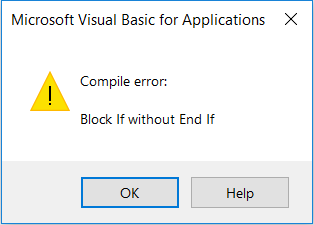
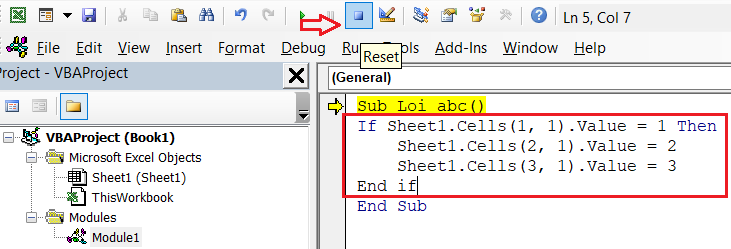

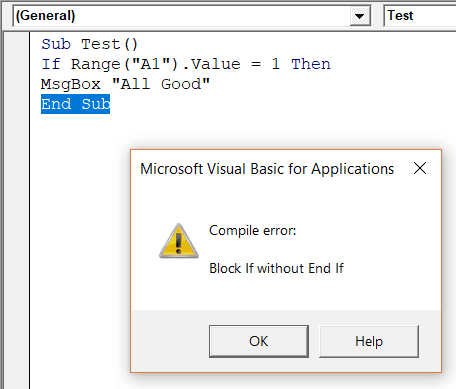


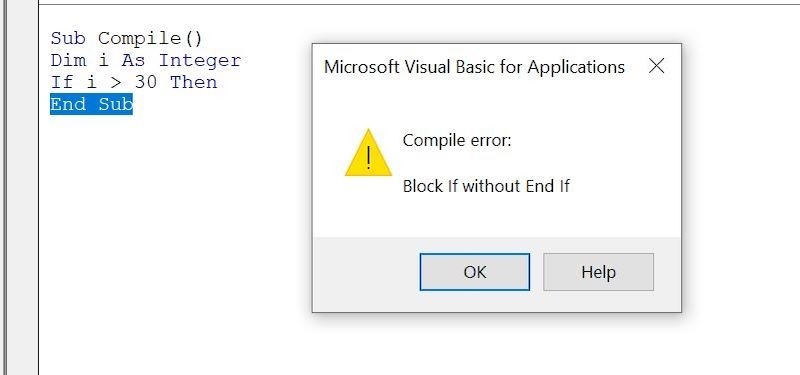



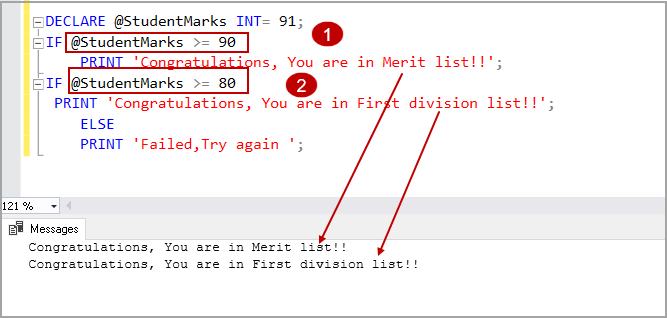












:max_bytes(150000):strip_icc()/Blockchain_final-086b5b7b9ef74ecf9f20fe627dba1e34.png)

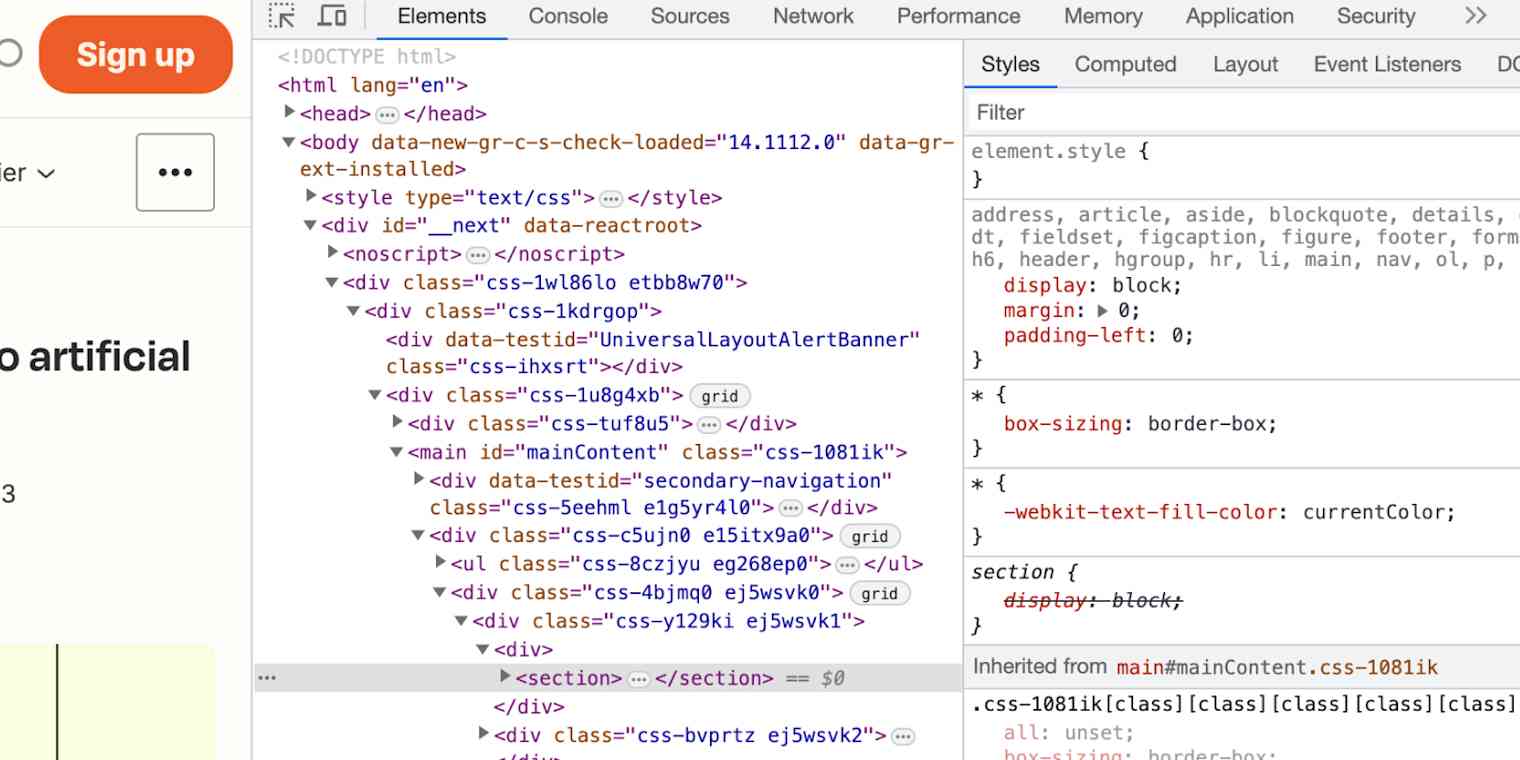
:max_bytes(150000):strip_icc()/can-i-stop-wheezing-without-an-inhaler-201099_final-1da70abd333c46e489a9720888ec0099.jpg)
Article link: block if without end if.
Learn more about the topic block if without end if.
- How to Fix the “End If without block If” Error – VBA and VB.Net …
- “Block if without end if” error VBA – excel – Stack Overflow
- Block If without End If | Microsoft Learn
- MS Excel: How to use the IF-THEN-ELSE Statement (VBA)
- VBA If Else Statement – How to Build the Formulas Step by Step
- VBA If Else Statement – Overview, Examples, How to use?
- Getting error “Block If without End If” despite having used End …
- Compile Error: Block If without End If – Mr. Excel
- Sao không thiếu End If | Giải Pháp Excel
- VBA Block if without End if – 2 if instructions : r/excel – Reddit
- Block If without End If – TeachExcel.com